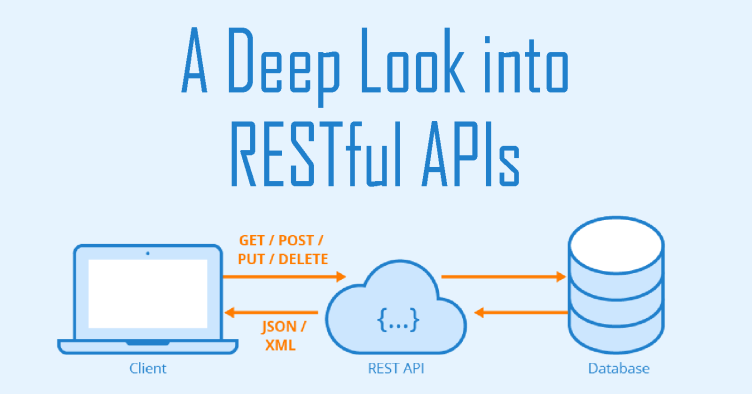
In today’s fast-paced digital world, mobile app development has become synonymous with REST API integration. REST APIs, or Representational State Transfer Application Programming Interfaces, have revolutionized the way applications communicate and interact with each other. By providing a standardized set of rules and protocols, REST APIs enable seamless data exchange between different systems, unlocking endless possibilities for developers and businesses alike.
So, what exactly is a REST API? Simply put, it is a software architectural style that allows applications to communicate over the Internet. REST APIs utilize the HTTP protocol and its methods, such as GET, POST, PUT, and DELETE, to perform operations on resources. This approach emphasizes simplicity, scalability, and the statelessness of interactions, making it an ideal choice for mobile app development.
By leveraging REST APIs, developers can effortlessly integrate various functionalities into their mobile apps. Whether it’s retrieving data from a remote server, submitting user inputs, or updating information in real time, REST APIs provide a flexible and efficient solution. This integration empowers developers to create dynamic, interactive, and personalized user experiences, enhancing engagement and driving business growth.
Moreover, the versatility of REST APIs allows developers to tap into a vast ecosystem of third-party services and platforms. From social media integration to payment gateways and location-based services, REST APIs provide a gateway to unlock powerful features and expand the capabilities of mobile applications. This seamless integration streamlines development efforts, reduces time-to-market, and enables businesses to stay ahead of the competition.
In the realm of mobile app development, REST APIs play a pivotal role in enabling seamless communication and integration between different systems. As developers embark on their journey to harness the power of REST APIs, understanding the various types becomes paramount. By familiarizing themselves with the diverse categories of REST APIs, developers can make informed decisions and optimize their mobile app development process.
So, what are the different types of REST APIs? Let’s delve into three prominent categories that showcase the versatility and flexibility of this architectural style.
Data-Driven REST APIs:
Data-driven REST APIs revolve around retrieving, manipulating, and presenting data. These APIs act as intermediaries, enabling mobile apps to interact with databases, file systems, or other sources of data. By leveraging data-driven REST APIs, developers can effortlessly retrieve relevant information, perform data processing operations, and present it in a meaningful and engaging manner to users.
Authentication and Authorization REST APIs:
In the world of mobile app development, security is of paramount importance. Authentication and authorization REST APIs provide the necessary mechanisms to verify the identity of users and grant appropriate access to protected resources. These APIs facilitate secure user authentication, session management, and authorization checks, ensuring that sensitive data and functionalities are safeguarded within the mobile app ecosystem.
Third-Party Integration REST APIs:
The integration of third-party services and platforms is often a key requirement for mobile apps. Third-party integration REST APIs enable seamless collaboration with external systems, such as social media platforms, payment gateways, and geolocation services. By leveraging these APIs, developers can effortlessly tap into the functionalities offered by external services, enriching their mobile apps with enhanced features and capabilities.
In the dynamic landscape of mobile app development, REST APIs have emerged as indispensable tools, driving seamless communication and integration between applications. Understanding the reasons why we need REST APIs is crucial for developers seeking to leverage their power and unlock new possibilities in mobile app development.
So, what are the key reasons we need REST APIs? Let’s explore the fundamental drivers behind their significance and impact on the mobile app ecosystem.
Efficient Data Exchange:
REST APIs provide a standardized approach for exchanging data between different systems, enabling efficient communication over the Internet. By adhering to the principles of Representational State Transfer, these APIs simplify the process of retrieving, submitting, and updating data, streamlining interactions between mobile apps and servers. This efficiency boosts productivity, reduces development time, and enhances the overall user experience.
Seamless Integration:
REST APIs serve as bridges that facilitate seamless integration between mobile apps and various services, platforms, and databases. They enable developers to tap into external functionalities, such as social media integration, payment gateways, or geolocation services, without reinventing the wheel. This seamless integration empowers developers to enhance their app’s capabilities, enrich user experiences, and deliver innovative solutions that cater to specific needs.
Scalability and Flexibility:
REST APIs offer scalability and flexibility, allowing mobile app developers to adapt to changing requirements and future growth. These APIs follow a stateless architecture, which means each request from a client is independent and does not rely on previous requests. This statelessness facilitates easy scalability as more clients can be added without impacting existing functionality. Additionally, the flexible nature of REST APIs allows for easy modifications and updates, ensuring the app can evolve with emerging technologies and user demands.
Collaboration and Ecosystem Expansion:
REST APIs foster collaboration by enabling developers to build upon existing services and create synergistic solutions. They encourage the growth of developer communities, where individuals can share and leverage each other’s APIs, driving innovation and accelerating development cycles. REST APIs also provide opportunities for businesses to expand their ecosystem by offering their own APIs to third-party developers, and promoting integrations and partnerships.
In conclusion, the reasons we need REST APIs in mobile app development are manifold. From efficient data exchange and seamless integration to scalability, flexibility, collaboration, and ecosystem expansion, these APIs form the backbone of modern app development. By harnessing their power, developers can create robust, interconnected, and user-centric mobile applications that thrive in the competitive digital landscape.
